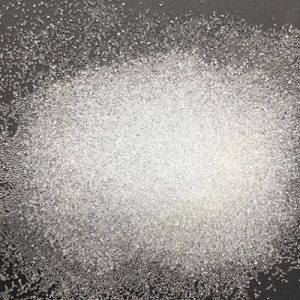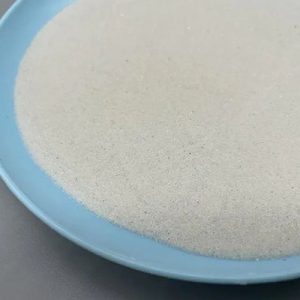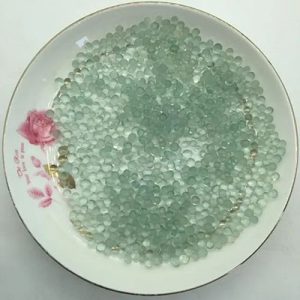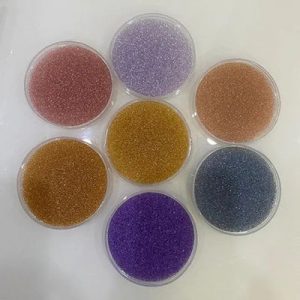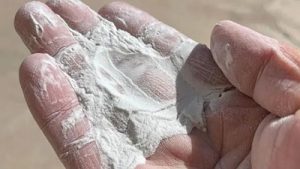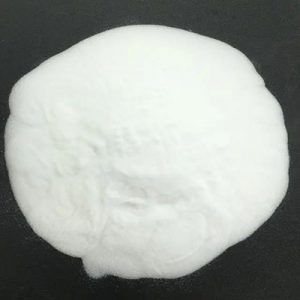1. Repair composite materials (resin putty)
The typical application of composite materials for repair is to add hollow glass microspheres into the resin to replace some fillers such as calcium carbonate and talc powder to make various types of putty. It has the advantages of light weight, strong adhesion, easy foaming, low shrinkage, and particularly significantly improved processing performance such as sanding and polishing. For hollow microspheres, dust is a problem. Interestingly, during post-processing, such as polishing, the damage to the hollow microspheres results in dust with the same density as glass, so that it does not float in the air and easily land on the ground. This will greatly reduce the disadvantage of high dust content in the air. This type of putty is widely used in repair operations of fiberglass products, automobiles, ships, machine tools, etc. It should be noted that the diameter of hollow glass microspheres should not be too large to prevent excessive pinholes after polishing, and a more ideal grading should be selected.
2. Synthetic foam plastic block and light core material
As early as 1971, there was a research paper at the SPI annual meeting, which introduced that high quality foam was obtained by adding insulating glass beads to epoxy resin, and the density was reduced by 20%~30%. When the foam density is 0.66g/cm3, the static pressure strength is 1136kg/cm2. When manufacturing lightweight GRP core materials, it is precisely the use of hollow glass microspheres that solves the technical problem. Compared with conventional fiberglass, the use of this core material greatly improves the stiffness of the product and reduces weight. The thickness of the core material is selected based on the stiffness. The density of the core material is 0.57g/cm3~0.67g/cm3, and the compressive strength is 284kg/cm2~426kg/cm2. Widely used in various industrial products, such as sandwich composite panels for vehicles, ships, buildings, sports equipment, models, deep water floats, etc.
3. Polyester furniture
Polyester furniture is another application field of hollow glass microspheres, mainly aimed at reducing their density. For example, it can achieve a density of 0.9g/cm3 for mixtures, 1.09g/cm3 for perlite and 1.46g/cm3 for calcium carbonate. At the same time, it also improves processing performance such as sanding and polishing, saving around 50% of working hours. As the proportion of hollow glass microspheres increases, their stiffness also significantly increases.
4. FRP spraying process
The resin system containing hollow glass microspheres can be sprayed using airless spraying equipment, and in addition, glass fiber short cut felt, cloth, and other fabrics can be used to manufacture laminated boards for ships. Choose the corresponding type of hollow glass microspheres according to the different pressures in the system. A typical formula is that the volume content of hollow glass microspheres is 22%, and the corresponding weight content is about 5%. Mixing equipment with lower shear force can effectively disperse it into the resin.
5. SMC and BMC products
Adding hollow glass microspheres to SMC and BMC can reduce the weight of their final molded products by 25% to 35%. The density has decreased from 1.7g/cm3 to 1.9g/cm3 to 1.2g/cm3 to 1.4g/cm3, and the dielectric properties have also been greatly improved. Choosing the appropriate formula can produce insulation panels that meet specific requirements. A typical application example is the ability to manufacture lightweight automotive and building components.
6. Glass fiber winding and extrusion process
The application of hollow glass microspheres in fiber winding and pultrusion processes can reduce costs, reduce the density of composite materials, and improve the impact strength and mechanical processing performance of composite materials. The use of hollow glass microspheres in the pultrusion process can reduce the amount of resin and fiberglass used. Adding 8% hollow glass microspheres can reduce the amount of glass fiber used by more than 15%. In addition to reducing weight, it can also improve the physical, dielectric, and insulation properties of the product. In addition, another advantage is that it can act as a lubricant in the resin system, increasing the extrusion speed by 25% to 70%.
7. Other resin systems
In addition to being added to polyester, hollow glass beads can also be added to epoxy resin to make synthetic foam plastic blocks. The epoxy/glass bead synthetic foam has been successfully applied to the rudder in the United States. The foam plastic block is used as the core material of the rudder and the surface layer is glass fiber reinforced plastic. Compared with polyester, epoxy can significantly increase its strength while reducing weight. The data measured in the laboratory indicates that the ship rudder made of this material can withstand a bending load of up to 2500kg, which is three times the strength of engineering plastic ABS. In Germany, foam plastic blocks composed of polyimide resin and hollow glass beads are also used to make rudder, which is used on a 12.5m long, 55kg sailboat. Rigid polyimide foam blocks have been successfully used in structural materials. This structure can improve its compression, bending strength and modulus, and dimensional stability at high temperature.
Other application areas:
(1) Electronic industry, used for casting and sealing composite materials.
(2) Composite foam plastic block, used for hull and deck, deepwater floating body materials, etc.
(3) Sound insulation and insulation materials, used for various precision instruments, high-end buildings and facilities.
(4) Lightweight concrete, gypsum products, rubber products.
